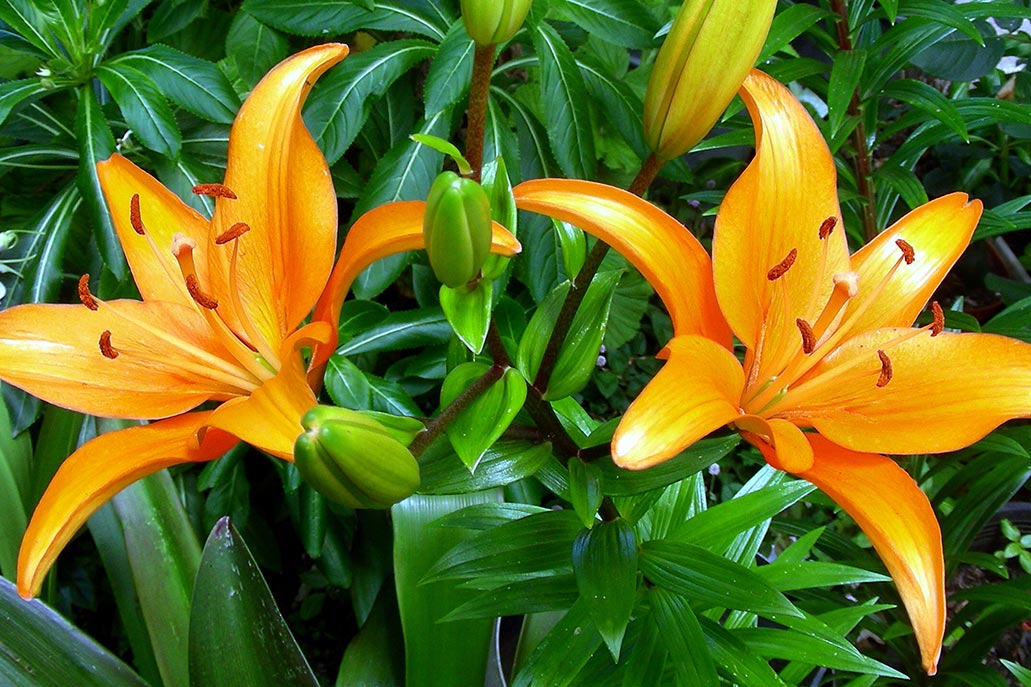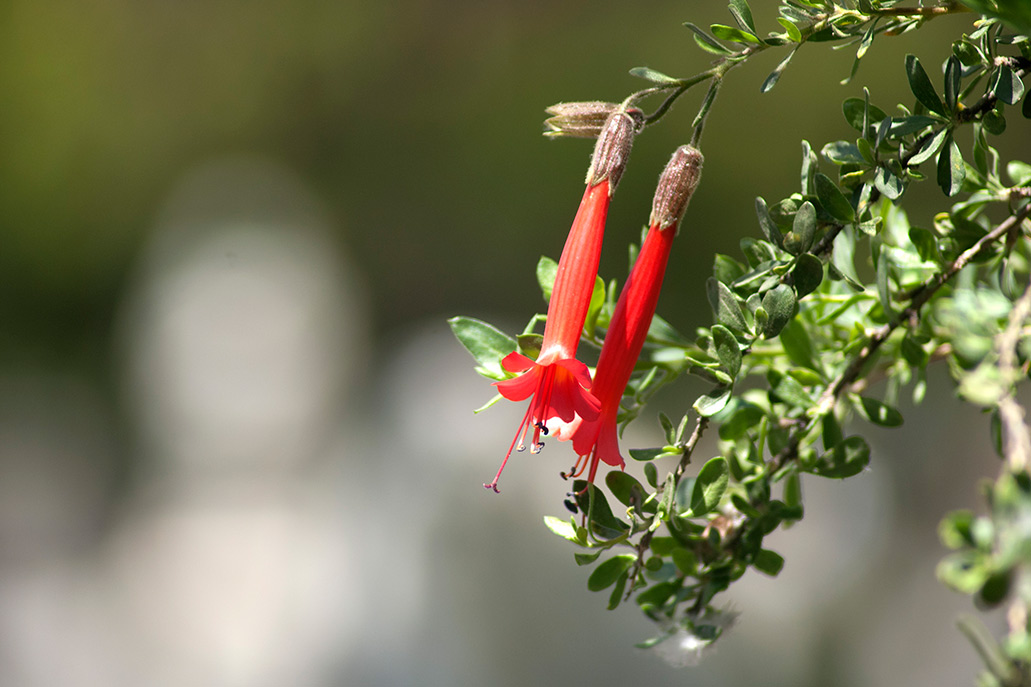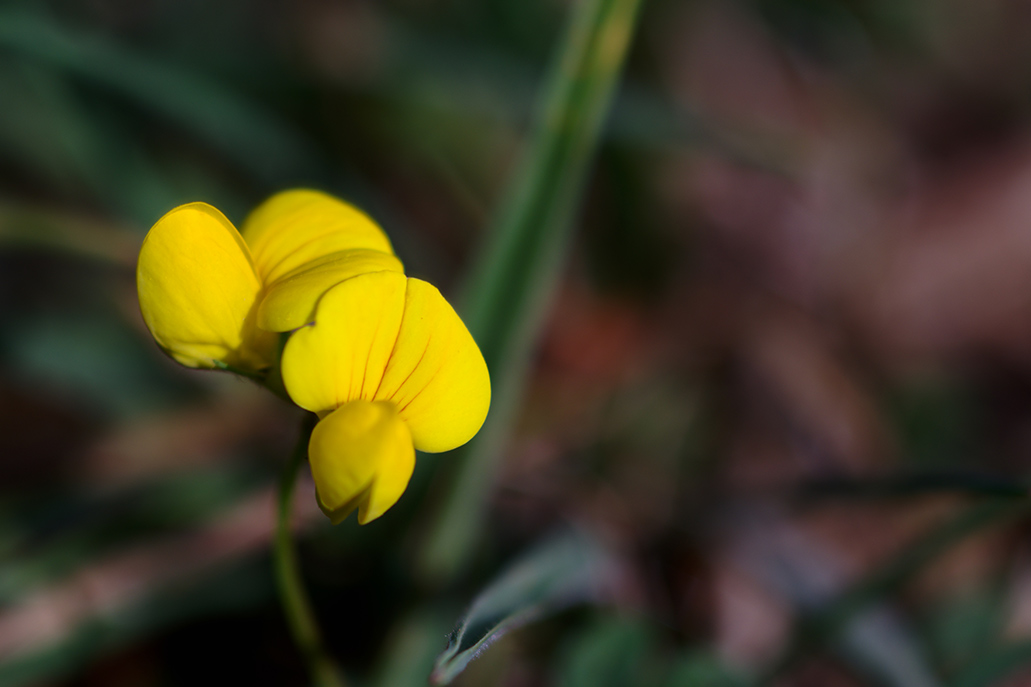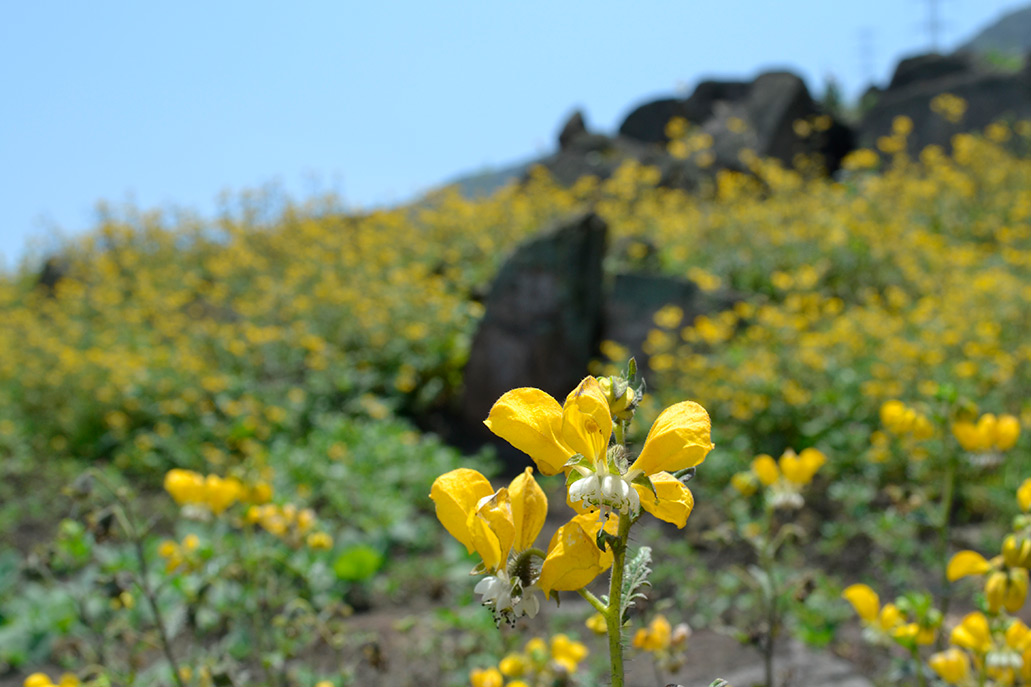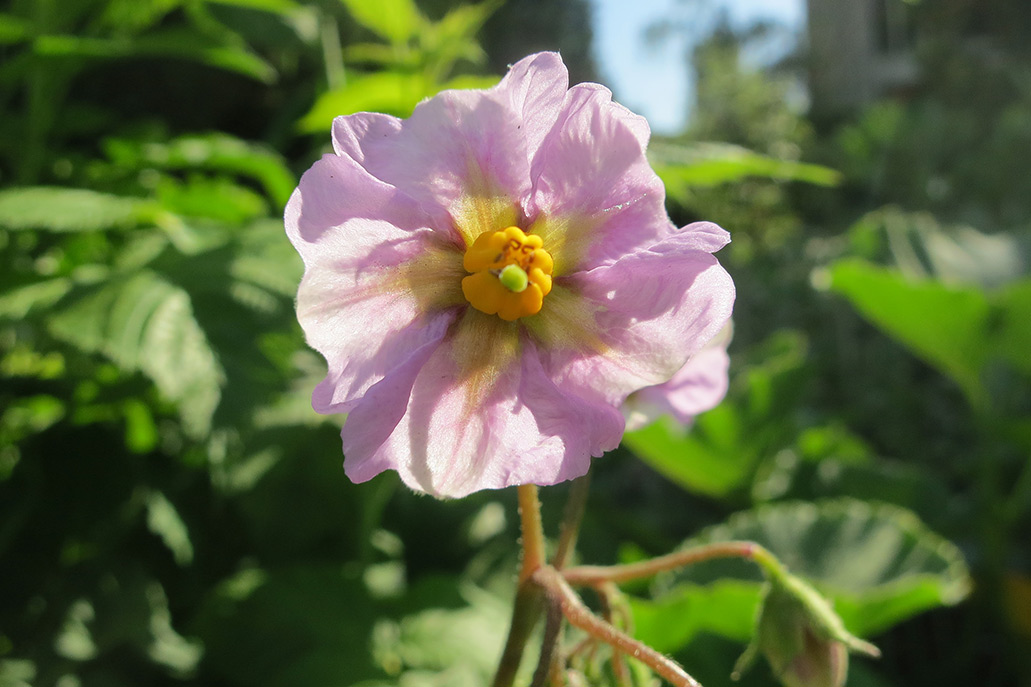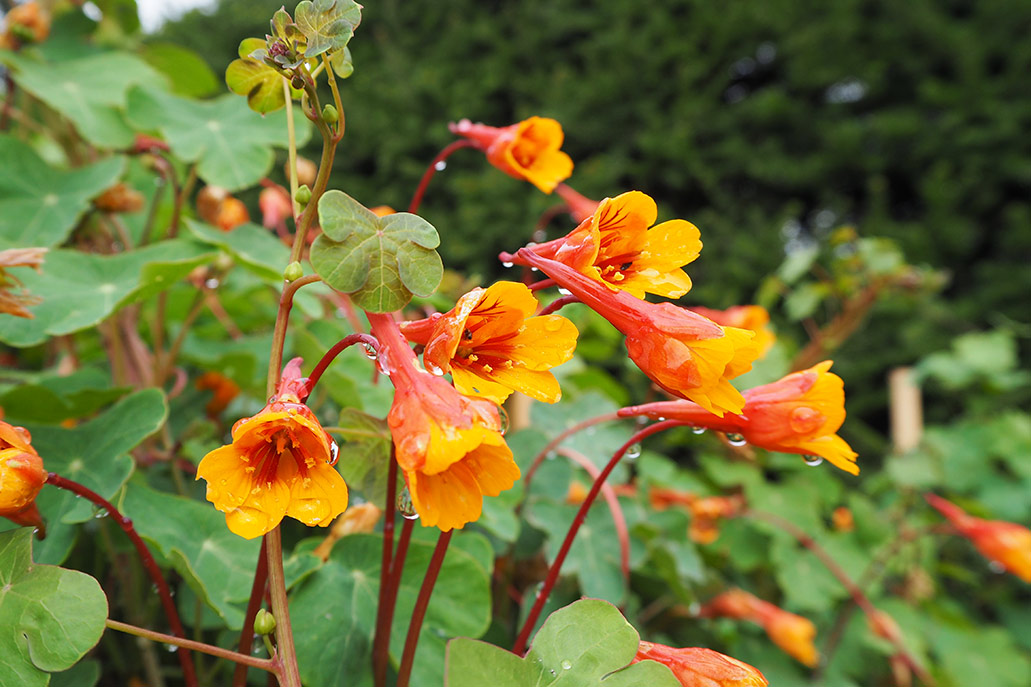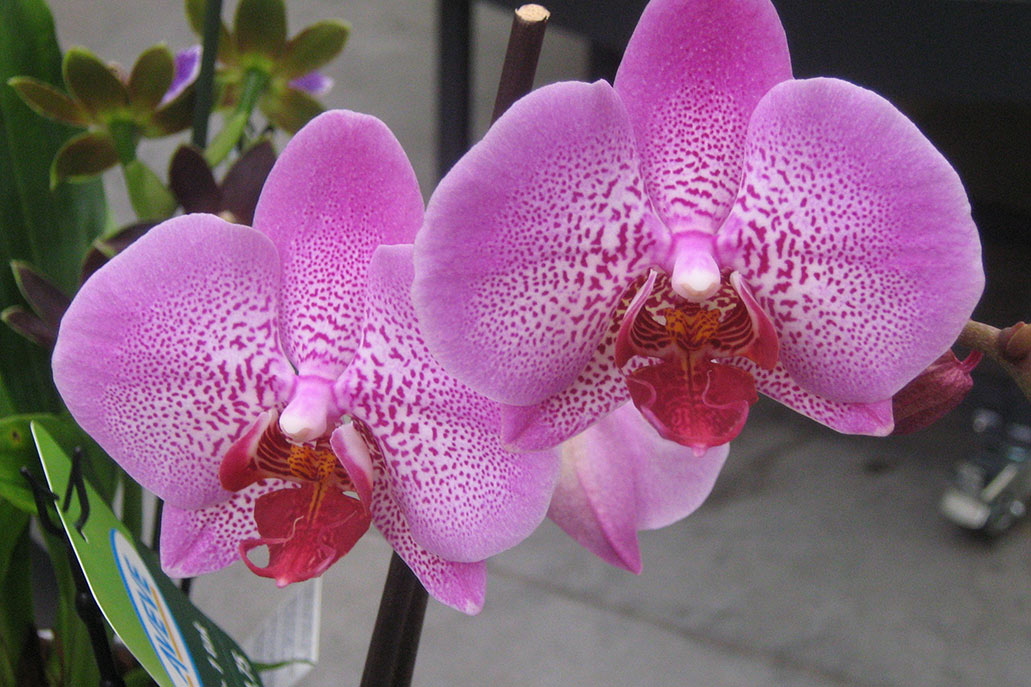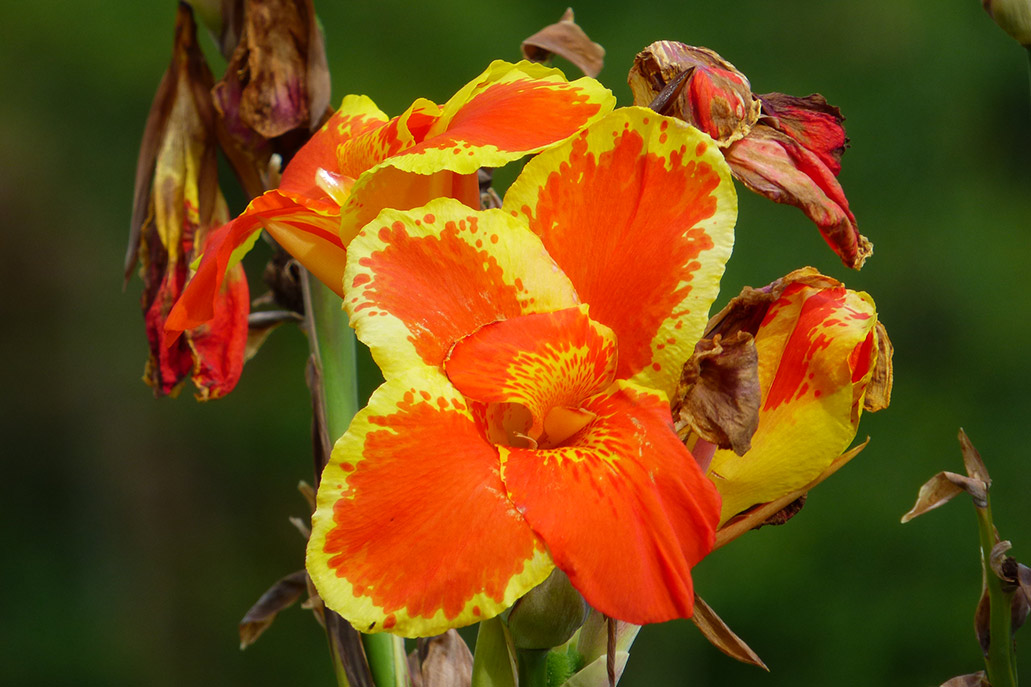The 8 most emblematic flowers of Peru
Peru is a country full of colors. Not only because of its highly diverse geography with beaches, arid coasts, high mountains and immense Amazonian jungles; but for its great diversity of flora that include some of the most beautiful flowers on the planet. It is estimated that there are 25,000 species of flora in the country, ten percent of the world. The flowers vary in size, colors and aromas depending on the altitudinal floor where it is found. Meet here the most beautiful flowers of Peru.
Content
The diversity of flora in Peru. Peru has more than 25 thousand species of flora, ten percent of the registered in the world. Thirty percent of this number are endemic species, that is, they are only found in Peru. Peru has 128 domesticated native species, number one in the world. Also the first with 787 wild edible species. Amazing!.
Kantuta flower
The Kantuta flower (Cantua buxifolia) is a species of shrub that belongs to the family of Polemoniaceae, whose flower is recognized as the national flower of Peru. It is also called the ‘sacred flower of the Incas’. It is native to the Andes Mountains, especially in Peru and Bolivia. Its cultivation dates back to the ancestral cultures of both countries, including the Incas.
The cantuta bush measures between two to three meters in height. Its flowers are tubular in shape, with a short calyx and intense colors that can be white, red, pink or yellow. It is used in traditional medicine to treat diarrhea and inflammation. Also as a dye and in the making of baskets. But above all the flower is used as decoration in homes and gardens.
- Where to see this flower in Peru? In the main Andean cities of Peru such as Cusco, Arequipa, Huancayo or Ayacucho.
- More information: The kantuta flower is also considered the national flower of Bolivia along with the patujú flower.
Broom flower
The broom (Spartium junceum) is a shrub famous in Peru for the huayno ‘Flor de retama’, composed by Ricardo Dolorier from Ayacucho in 1970. This shrub has a height of between 3 to 5 meters with leaves of 7 to 13 centimeters that beautiful yellow flowers germinate that are recognized as a symbol of Peru, especially in the towns of the Andes.
The broom has healing properties. In the Andean towns it is used mainly as a repellent against insects that harm the plantations. This plant inhabits rainy geographies or with high humidity. It is possible to find it not only in Peru but also from Mexico to Bolivia. It can also be used for decorating homes and gardens.
- Where to see this flower in Peru? In the main Andean and Amazonian cities such as the cities of Iquitos, Amazonas, Huancayo or Cusco.
- More information: The huayno ‘Flor de retama’ was composed in response to the repression by the police that left twenty dead in the city of Huanta in 1969. Today the song is used in demonstrations and protests as a synonym of vindication of the Peruvian people.
Flower of Amancaes
The Amancaes flower (Ismene Amancaes) is a species of bulbous plant native to Peru. It owes its name to the fact that one of its habitats is the Lomas de Amancaes in the city of Lima, which made it a symbol of the ‘City of Kings’. It stands out because it blooms in winter, on the humid slopes of the hills that include part of the districts of Rímac, Independencia and San Juan de Lurigancho.
The Amancaes flower blooms only in winter (from May to August), when the hills of Lima turn green. The rest of the year the hills are arid, which attracts land dealers. This, in turn, is a threat to the Amancaes flower. It has an intense yellow coloration, with green leaves. This flower can also be seen in other parts of the city of Lima such as Pachacamac or in the tourist hills of Lachay.
- Where to see this flower in Peru? In ecological parks in the city of Lima such as the hills of Amancaes, the hills of Pachacamac or the hills of Lachay.
- More information: The Amancaes flower is a symbol of the city of Lima. The famous Lima composer Chabuca Granda mentions this beautiful flower in her waltz ‘José Antonio’: José Antonio comes / riding along a path, / he comes from the ravine / to see the Amancaes flower (…).
Potato flower
The potato (Solanum tuberosum) is a tuber that is known worldwide for being part of the diet of millions of families in the world. It is cultivated everywhere, but its greatest diversity is in Peru. Its flower is well known in the Andean towns where it is cultivated. These measure from 3 to 4 centimeters. They have petals joined by their edges to a star-shaped corolla. Its colors can be white or purple.
The potato flower is a symbol of the Andean peoples who cultivate this product. There it usually blooms between January and April, filling the farms and fields with a striking color. Peru has more than four thousand varieties of potatoes, the largest in the world. The flower is also used ornamentally in homes and even hats.
- Where to see this flower in Peru? In all the Andean towns of Peru where potatoes are grown.
- More information: The renowned Peruvian composer Luis Abanto Morales created the song ‘La flor de papa’ in honor of this beautiful flower.
Flower of Mashua
The mashua (Tropaeolum tuberosum) also called mashwa or añu is a herbaceous plant that is cultivated in the Andes Mountains of Peru, Bolivia, Ecuador and Colombia, between 3,500 and 4,100 meters above sea level. It has an erect stem, compact foliage, green leaves, and elongated tubers. Its flowers are cylindrical with colors ranging from dark yellow, orange or scarlet red.
The mashua has a root similar to the olluco. Its flower is even edible in salads. It has important nutritional properties, especially protein, carbohydrate, carotene and vitamin C. Its consumption can help fight prostate cancer. It is believed, according to the chronicles, that it inhibits the sexual activity of men. Even that the Inca gave this tuber to his troops for a better performance in war.
- Where to see this flower in Peru? In the Andean regions of more than 3 thousand meters above sea level, such as the cities of Cusco, Ayacucho, Huancavelica, Junín or Pasco.
- More information: Mashua has an intense and strong flavor due to its concentration of glucosinolates. It can be eaten raw or cooked.
The orchid
Orchids (Orchidaceae) are a group of highly adaptable plants in the world. In Peru, a country with a mega-diverse geography, there are more than 2,700 species of orchids (there are about 30,000 in the world). These have a high ornamental value. Its main characteristic is its flowers of various colors and shades, as well as its triangular and symmetrical shape.
Orchids flourish in a variety of geographies, from 100 to 4,600 meters above sea level. One of the points with the greatest diversity is the Historic Sanctuary of Machu Picchu. There, there are striking species such as Masdevallia veitchiana, known as ‘Waqanki’ (tears). Other species also stand out, such as the Wiñayhuayna, the dancing lady, the Pleurothallis and more.
- Where to see this flower in Peru? In various geographies and latitudes (from 100 masl to 4,600 masl) including the Historic Sanctuary of Machu Picchu.
- More information: The legend ‘Waqanki’ (you will cry) is about a legend in which an Inca princess was in love with a young Inca warrior. Because of the Inca’s refusal to accept, the princess flees into the forest. Then the gods decided to turn it into a flower calling it ‘Waqanki’.
The lily
The lily (Alstroemeria aurantiaca) is recognized for its beautiful trumpet-shaped flower, which adapts to regions with high temperatures. This plant can reach 80 centimeters in height. It has lanceolate leaves. Its flowers can be orange or yellow. They are native to the Andes of Peru and Chile. They are mainly used in decorating homes.
The lily blooms with temperatures that vary from 18ºC. up to 22ºC. However, they can also flourish in homes with daytime temperatures of 10ºC. The white lily is also called the ‘Bird of Paradise Flower’. The one with the orange color is called ‘Lily of the Incas’. This is due to an Inca legend that tells how the flower helped save the life of a young Inca nobleman.
- Where to see this flower in Peru? In various geographies of Peru and Chile ranging from 10ºC. up to 22ºC.
- More information: Legend has it that Quintral, a young Inca nobleman, became seriously ill due to an epidemic. The beautiful young woman Amancay sought to help him through a sorceress who told her to get a beautiful yellow flower. The flower was guarded by a condor who took her heart and gave her the flower. While the condor flew, the blood of Amancay bathed the valleys where the yellow lilies germinated with red tones.
The achira
The ornamental achira (Canna indica) is a plant native to South America, which flourishes on the coast and highlands of Peru from 0 to 2,900 meters above sea level. Its name comes from the Quechua ‘Achuy’ which means ‘sneeze’. Its cultivation dates back to 4,500 years ago. It is used as food, as well as in the decoration of houses.
The achira has large, green leaves that are 30 to 60 centimeters long. Its flowers are small, up to 1 centimeter, with other lateral clusters of yellow, white with reddish tones. It flourishes in temperatures ranging from 14ºC. up to 27ºC, especially in tropical mountainous climates. Many families in Europe use it as ornamental plants.
- Where to see this flower in Peru? In tropical mountainous regions such as the cities of Tingo María, Huánuco, Tarapoto or Machu Picchu.
- More information: The achira is also used as food in salads. The Chibchas culture of Colombia used it in their diet. It is also used in the preparation of breads, biscuits and more.
By Machupicchu Terra – Last updated, August 28, 2023
